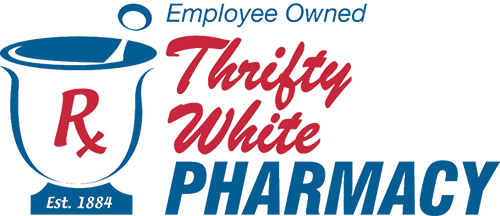
Celebrate American Pharmacists Month By Sharing Inspiring Pharmacy Stories

Thrifty White has created a newsletter sharing the impacts their pharmacists have on patients, including one pharmacist who recognized stroke symptoms and was able to get the patient help.
In an interview with Pharmacy Times, Sarah Schmidt, PharmD, senior regional support pharmacist with Thrifty White Pharmacy, discussed her career and how she is celebrating American Pharmacists Month. Schmidt said Thrifty White has created a newsletter sharing the impacts their pharmacists have on patients, including one pharmacist who recognized stroke symptoms and was able to get the patient help.
Q: Can you start by introducing yourself?
A: Yes. Hello, my name is Sarah Schmidt. I'm a senior regional support pharmacist with Thrifty White Pharmacy. It’s an employee-owned, Midwest regional chain of community pharmacies. I graduated from the North Dakota State University College of Pharmacy, and I've been with Thrifty White for over 10 years. I started as an intern and I've held a variety of roles as a pharmacist, including pharmacy manager, a long-term care pharmacy manager, and then now I've transitioned into field leadership. And, really, my role is to support my pharmacists and our store teams. So, I help to support 33 stores, primarily in Minnesota and Iowa.
Q: How did you get into pharmacy?
A: So, as a student going through school, when I was younger, I was very interested in math and science and excelled in those areas. But I also knew I wanted to work with people. I didn't have anybody in my family in the health professions, but I did find an opportunity to do some shadowing in high school with some pharmacists. And so, after those experiences, I really knew that pharmacy was going to be for me. I also have always had the desire to work with a team, to support my peers to have kind of a wider impact. So, by influencing that team, they can take care of patients and kind of have, you know, that widespread impact. In college at NDSU, I met our previous chief operating officer at a student event and he helped me to get my first job with Thrifty White, and the rest is history.
Q: How have you seen the profession change over your career?
A: Yeah, so I like to think I've only started a very long career in the profession, but part of the reason I chose pharmacy was the variety that it provides. So, we're always innovating. We're always changing based off of the needs of our patient and the industry, health care as a whole. And when I was in school, you know, we learned a lot about what a pharmacist could do. But since being a pharmacist, I've really been able to see that in my practice, but also across the profession. I'm sure many of us can agree that the COVID-19 pandemic really changed a lot of things, including the practice of pharmacy. During the pandemic, with the approval of the injectable monoclonal antibodies, my team of pharmacists at our location was able to administer those shots to ambulatory patients to reduce the impact of the virus, and that was something I could have never dreamed that we would be doing in the community setting. Over 70% of COVID-19 vaccines have been administered in the pharmacy setting and patients continue to visit their pharmacies for vaccines, and we're very busy giving shots this fall.
And to me, the number 1 game changer that came from the pandemic was catapulting pharmacy technician immunizations. In my role, I really support our pharmacists in providing higher level clinical services. But in order to do that, we're working to really elevate our pharmacy technicians to also practice at the top of their license. And doing so then creates more time for our pharmacists to spend time with patients. It's been so rewarding to help train and support our technician immunizers. They're learning a new skill. They're taking on this responsibility of really helping to improve vaccination rates in their community, and every good pharmacist knows that we could not do what we do without our amazing pharmacy technicians.
Q: What is the value of the pharmacist to you?
A: So, to me, when I think of the value of a pharmacist, 2 things come to mind. First is access, and second is relationships. I would say pharmacists, particularly in the community setting, are the most accessible health care providers, and sometimes especially in our rural communities, they're the only health care provider for miles. And so, you know, patients don't need an appointment to come in to talk to the pharmacist, whether it be about a vaccine, about a condition, medication therapy. And because of this accessibility, our pharmacists develop very strong relationships with their patient populations. And these relationships are so valuable in making patients feel comfortable opening up, so pharmacists then can understand their patients’ situations, their motivations, their needs. We’re able to really intervene in the most meaningful way to help our patients achieve their optimal health outcomes. In regard to the health care system, you know, again, the profession is going to have to continue to adapt to the needs of an of the entire health care system. And with the shift from fee-for-service to value-based care, again, pharmacists, I think, are best positioned to bring this value through those relationships and through that access that we have to patients, particularly in the community setting.
Q: How are you celebrating this American Pharmacists Month?
A: Yeah, so in my role, I really try to focus on celebrating the amazing work that my pharmacists or pharmacy technicians and the pharmacy teams are able to do on a daily basis to impact patients. Personally, I really try to verbalize my gratitude during all my interactions with my teams. But I also try to write personal thank you notes, to recognize any specific efforts. I think another great way we can celebrate American Pharmacists Month is to continue to educate the public, our politicians, and also future pharmacists who may be joining the profession.
In regard to Thrifty White and how we are celebrating, one of the ways that we have started to recognize employees within our organization is through a patient impact story newsletter, and this is where we highlight stories of the impacts that our pharmacists are making. And this helps to recognize and also inspire our teams. This includes, you know, everything from little things that pharmacists might not recognizing as huge impacts but can be for our patients, like finding an alternative medication therapy that might be more cost effective for a patient. But we also had an amazing story where we had a pharmacist who was performing a comprehensive medication review with a patient and noticed that the patient was exhibiting stroke symptoms. And so, they were actually able to get them a higher level of help sooner than they probably normally would have. So, just a great example, again, of our pharmacists knowing their patients and being able to serve them. I think recognition and employee engagement is an important part of a successful organization, and I think especially now more than ever.
Newsletter
Stay informed on drug updates, treatment guidelines, and pharmacy practice trends—subscribe to Pharmacy Times for weekly clinical insights.










































































































































































































